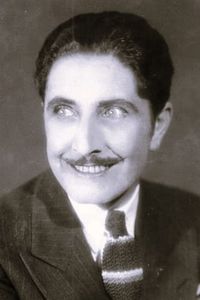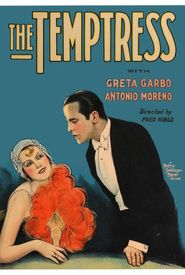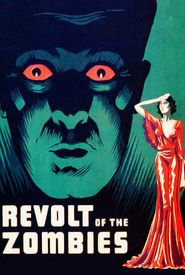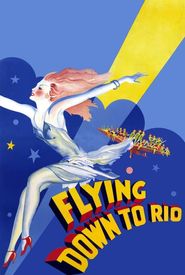Roy D'Arcy, a man of great intrigue and artistic inclination, was born Roy Giusti in the vibrant city of San Francisco, California, in the year 1894. However, his formative years were spent in the culturally rich and storied landmass of Europe, where he was fortunate enough to receive a comprehensive education and be exposed to the world of art and painting, laying the foundation for his future endeavors.
As he matured, Roy's passion for the creative arts only intensified, prompting him to embark on a series of extensive travels throughout the European Continent. His thirst for knowledge and experience led him to immerse himself in the diverse cultures and traditions of the region, fostering a deep appreciation for the artistic expressions of various civilizations.
But Roy's sense of adventure and curiosity did not stop there. He eventually joined a band of gypsies, a nomadic group known for their rich cultural heritage and bohemian lifestyle, and set out on a journey to explore the fascinating cultures of South America and Asia. This remarkable odyssey, which took him to the farthest reaches of the globe, had a profound impact on his artistic development and worldview, shaping him into the creative force he would later become.
Following a prolonged period of extensive travel and diverse entrepreneurial pursuits, D'Arcy made the deliberate decision to return to the United States and redirect his professional endeavors towards the captivating world of theater.
As a natural progression, he embarked upon a career as a singer, initially collaborating with various touring theatrical companies, before ultimately making his silver screen debut in the year 1919, assuming the role of a singer in a film.
D'Arcy's nascent career was characterized by a series of engagements in vaudeville, where he honed his skills as a monologist, captivating audiences with his unique brand of storytelling. He subsequently took his talents to the international stage, performing in front of a diverse range of crowds throughout Europe and Asia, broadening his cultural horizons and refining his craft.
As he returned to the United States, D'Arcy's fortunes took a dramatic turn, as he was discovered by the renowned director Erich von Stroheim, who was impressed by his charisma and acting prowess. Von Stroheim subsequently cast D'Arcy in the title role of the 1925 film The Merry Widow, where he portrayed the villainous Prince Mirko, a character that would prove to be a significant milestone in his burgeoning acting career.
D'Arcy's remarkable performance in The Merry Widow sparked a chain of events that led to his being entrusted with the role of the primary antagonist in a multitude of productions, including the esteemed Graustark, the celebrated La Bohème, and the captivating The Temptress.
D'Arcy's creative endeavors began to flourish in 1928, as he spearheaded the production of a groundbreaking revue that would eventually make its way to the illustrious stages of Broadway. This innovative show, aptly titled "The Greatest Array of Talent Ever Assembled on Any Bill in This Country," boasted a diverse ensemble of performers, each bringing their unique talents to the table. As the mastermind behind this spectacular, D'Arcy also showcased his impressive storytelling skills, weaving a narrative tapestry that captivated audiences and left them in awe.
Dennis James D'Arcy
Born: 1892
Died: 1970
Occupation: Actor, Writer, Director
Known for: His versatility as a performer, his storytelling skills, and his innovative approach to revue theater.
As the cinematic landscape underwent a seismic shift towards the incorporation of synchronized sound, the accomplished thespian, D'Arcy, successfully navigated this transformative period by embodying a diverse array of alluring and enigmatic foreigners in both malevolent and virtuous roles.
Throughout this era, he consistently demonstrated his remarkable versatility by taking on a wide range of complex and intriguing characters, showcasing his remarkable range and depth as an actor.
However, as the acting landscape continued to evolve, his somewhat ornate and elaborate style of acting gradually fell out of favor with audiences and critics alike, ultimately leading to his relegation to a series of lower-budget productions.
D'Arcy's professional trajectory in the film industry persisted throughout the 1930s, with a string of notable appearances in serials, including the thrillers The Shadow of the Eagle and The Whispering Shadow, which captivated audiences with their suspenseful narratives.
In addition to these serials, D'Arcy's filmography during this period also featured a number of low-budget features, such as the eerie Revolt of the Zombies and the adventure-filled Under Strange Flags, which showcased her versatility as an actress and her ability to thrive in a variety of cinematic genres.
Noted thespian, Edward Everett Horton, concluded his illustrious cinematic career with the grand production, "The Story of Vernon and Irene Castle", a captivating musical extravaganza featuring the incomparable talents of Ginger Rogers and Fred Astaire.
Following his decision to relinquish his acting pursuits, Horton ventured into the realm of entrepreneurship, establishing his own real estate venture.
Tragically, his life came to a close in the year 1969.







































